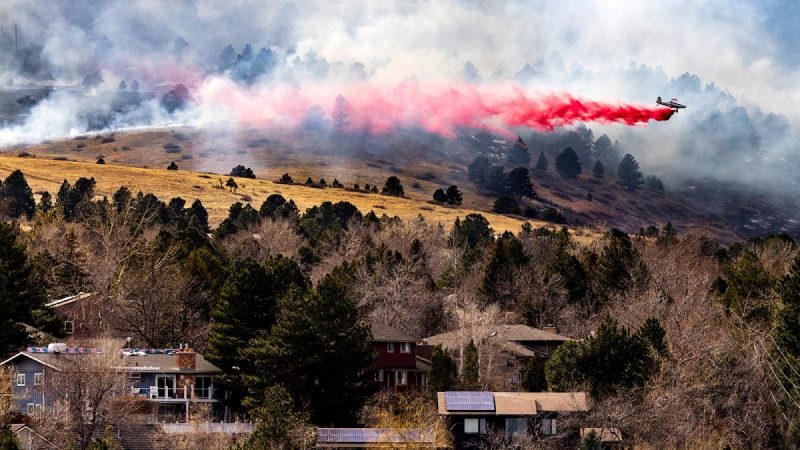As wildfires become an increasingly frequent and devastating threat in Colorado, communities must take proactive steps to prevent them. The vast and beautiful landscapes of the state are susceptible to the dangers of Colorado fires, which can cause extensive damage to homes, wildlife, and natural resources. Effective prevention strategies are crucial in safeguarding both people and property from the destructive power of these fires. This article explores ten powerful strategies for preventing Wildfires in Colorado and protecting your community.
Colorado Fires Prevention: Understand the Risks
To effectively prevent Colorado fires, it is essential to understand the specific risks associated with your area. Different regions in Colorado face varying levels of fire danger based on vegetation, weather patterns, and local conditions. For instance, mountainous regions with dense forests may be at higher risk compared to urban areas with minimal vegetation. By assessing the fire risks in your community, you can tailor prevention strategies to address the unique challenges you face. Local fire departments and emergency management agencies often provide valuable information on fire risks and help develop community-specific prevention plans.
Colorado Fires Prevention: Create a Defensible Space
A defensible space is a critical element in protecting homes from Colorado fires. This involves creating a buffer zone around your property to reduce the risk of fire spreading to your home. Start by clearing flammable vegetation, such as grass, leaves, and branches, from within a 30-foot radius of your house. Maintain this area regularly by removing dead plants and debris. Additionally, consider using fire-resistant plants and materials for landscaping to minimize the risk of ignition. By establishing a defensible space, you enhance the safety of your property and improve the chances of firefighters successfully defending your home.
Colorado Fires Prevention: Maintain Your Property
Regular maintenance of your property is a proactive measure in preventing Wildfires in Colorado. This includes keeping your lawn well-watered and free from dry, dead vegetation. Trim trees and bushes to ensure they do not touch or overhang your home, as this can create a direct path for flames. Ensure that your roof and gutters are clear of leaves and debris, which can easily catch fire. By maintaining your property, you reduce potential fuel sources for wildfires and improve the overall safety of your home and community.
Wildfires in Colorado Prevention: Implement Fire-Resistant Building Materials
Using fire-resistant building materials is a powerful strategy for preventing the spread of Wildfires in Colorado. Consider upgrading your home’s exterior with materials such as metal, brick, or stucco, which are less likely to catch fire compared to wood siding. Install fire-resistant roofing materials like asphalt shingles or metal roofing to reduce the risk of embers igniting your home. Additionally, ensure that vents and eaves are protected with mesh screens to prevent embers from entering your home. By investing in fire-resistant materials, you enhance the resilience of your property against wildfires.
Colorado Fires Prevention: Create a Fire Safety Plan
A well-developed fire safety plan is crucial for protecting your community from Wildfires in Colorado. This plan should include clear evacuation routes, emergency contact information, and designated meeting points for family members. Regularly review and practice your fire safety plan to ensure that everyone in your household knows what to do in the event of a fire. Additionally, consider creating a communication plan to stay informed about fire conditions and updates. By having a comprehensive fire safety plan in place, you increase your preparedness and ability to respond effectively during a wildfire emergency.
Wildfires in Colorado Prevention: Educate the Community
Community education plays a vital role in preventing Wildfires in Colorado. Organize workshops, seminars, and informational sessions to raise awareness about fire prevention practices and the importance of adhering to local fire regulations. Encourage residents to participate in community fire drills and preparedness activities. By fostering a culture of fire safety and preparedness, you empower individuals to take proactive measures and contribute to the overall safety of the community. Collaborate with local fire departments and emergency services to provide accurate and up-to-date information on fire prevention strategies.
Colorado Fires Prevention: Follow Local Fire Restrictions
Adhering to local fire restrictions and regulations is essential in preventing Wildfires in Colorado. During high-risk fire seasons, authorities may implement restrictions on activities such as outdoor burning, campfires, and fireworks. Stay informed about current fire restrictions in your area and ensure that you and your community comply with these guidelines. Violating fire restrictions can increase the risk of wildfires and result in legal consequences. By following local regulations, you contribute to the collective effort to prevent fires and protect your community from potential disasters.
Wildfires in Colorado Prevention: Install Spark Arresters
Spark arresters are devices designed to prevent sparks and embers from escaping chimneys and stovepipes, reducing the risk of Colorado fires. Install spark arresters on all chimneys and stovepipes to capture and contain sparks before they can ignite nearby vegetation or structures. Regularly inspect and clean spark arresters to ensure they are functioning properly. Additionally, have your chimney professionally cleaned and inspected at least once a year to remove creosote buildup and minimize the risk of chimney fires. Spark arresters are a simple yet effective measure in preventing wildfires and protecting your home.
Wildfires in Colorado Prevention: Support Fire Prevention Programs
Supporting fire prevention programs and initiatives is a powerful way to contribute to the safety of your community. Many organizations and agencies offer programs aimed at reducing the risk of wildfires and enhancing community preparedness. Consider volunteering or donating to local fire prevention programs, participating in fundraising events, or advocating for increased funding and resources for fire prevention efforts. By supporting these programs, you help strengthen the overall resilience of your community and ensure that valuable resources are available for fire prevention and response activities.
Colorado Fires Prevention: Invest in Fire-Resistant Landscaping
Fire-resistant landscaping is an effective strategy for reducing the risk of Wildfires in Colorado spreading to your home. Choose plants and materials that are less likely to ignite and spread flames, such as succulents, low-growing groundcovers, and gravel. Avoid using highly flammable plants and materials like junipers and pine needles. Create defensible space around your home by incorporating fire-resistant landscaping techniques and maintaining this area regularly. By investing in fire-resistant landscaping, you enhance the overall safety of your property and contribute to the prevention of wildfires in your community.
Conclusion
Preventing Colorado fires requires a combination of proactive measures, community involvement, and adherence to safety guidelines. By understanding the risks, creating defensible spaces, maintaining properties, using fire-resistant materials, and implementing comprehensive fire safety plans, you can significantly reduce the risk of wildfires in your community. Education, compliance with local fire restrictions, and support for fire prevention programs further enhance your efforts to protect your home and surroundings. Together, these strategies form a robust approach to safeguarding against the devastating impacts of Colorado fires.
FAQs
Q1. What are the primary causes of Colorado fires?
Colorado fires are primarily caused by human activities, including campfires, discarded cigarettes, fireworks, and equipment use. Natural causes such as lightning strikes can also ignite wildfires. Understanding these causes helps in implementing effective prevention strategies.
Q2. How often should I maintain my defensible space?
Defensible space should be maintained regularly, at least once a year. During fire season, more frequent checks may be necessary to ensure that vegetation and debris are cleared and that fire-resistant landscaping remains effective.
Q3. Are there specific fire-resistant plants recommended for Colorado?
Yes, some fire-resistant plants suitable for Colorado include succulents, lavender, and certain grasses. Avoid highly flammable plants like junipers and pine trees. Consult local gardening experts for recommendations based on your specific area.
Q4. How can I stay informed about local fire restrictions?
Stay informed about local fire restrictions through your local fire department, community bulletin boards, and official government websites. Many communities also have emergency alert systems that provide updates on fire restrictions and warnings.
Q5. What should be included in a fire safety plan?
A fire safety plan should include evacuation routes, emergency contact information, designated meeting points, and instructions for family members. It should also outline steps for securing important documents and supplies in case of evacuation. Regularly review and practice the plan to ensure preparedness.
Also read: Delamere Forest Camping and Caravanning Club Site: 10 Essential Tips for an Amazing Stay









